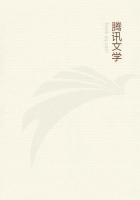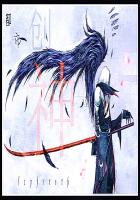IN the first chapter of this work I have stated generally the reasons which lead us to conclude that the large islands in the western portion of the Archipelago--Java, Sumatra, and Borneo--as well as the Malay peninsula and the Philippine islands, have been recently separated from the continent of Asia. I now propose to give a sketch of the Natural History of these, which I term the Indo-Malay islands, and to show how far it supports this view, and how much information it is able to give us of the antiquity and origin of the separate islands.
The flora of the Archipelago is at present so imperfectly known, and I have myself paid so little attention to it, that I cannot draw from it many facts of importance. The Malayan type of vegetation is however a very important one; and Dr. Hooker informs us, in his "Flora Indica," that it spreads over all the moister and more equable parts of India, and that many plants found in Ceylon, the Himalayas, the Nilghiri, and Khasia mountains are identical with those of Java and the Malay peninsula. Among the more characteristic forms of this flora are the rattans--climbing palms of the genus Calamus, and a great variety of tall, as well as stemless palms. Orchids, Aracae, Zingiberaceae and ferns, are especially abundant, and the genus Grammatophyllum--a gigantic epiphytal orchid, whose clusters of leaves and flower-stems are ten or twelve feet long--is peculiar to it. Here, too, is the domain of the wonderful pitcher plants (Nepenthaceae), which are only represented elsewhere by solitary species in Ceylon, Madagascar, the Seychelles, Celebes, and the Moluccas. Those celebrated fruits, the Mangosteen and the Durian, are natives of this region, and will hardly grow out of the Archipelago. The mountain plants of Java have already been alluded to as showing a former connexion with the continent of Asia; and a still more extraordinary and more ancient connection with Australia has been indicated by Mr. Low's collections from the summit of Kini-balou, the loftiest mountain in Borneo.
Plants have much greater facilities for passing across arms of the sea than animals. The lighter seeds are easily carried by the winds, and many of them are specially adapted to be so carried.
Others can float a long tune unhurt in the water, and are drifted by winds and currents to distant shores. Pigeons, and other fruit-eating birds, are also the means of distributing plants, since the seeds readily germinate after passing through their bodies. It thus happens that plants which grow on shores and lowlands have a wide distribution, and it requires an extensive knowledge of the species of each island to determine the relations of their floras with any approach to accuracy. At present we have no such complete knowledge of the botany of the several islands of the Archipelago; and it is only by such striking phenomena as the occurrence of northern and even European genera on the summits of the Javanese mountains that we can prove the former connection of that island with the Asiatic continent. With land animals, however, the case is very different. Their means of passing a wide expanse of sea are far more restricted. Their distribution has been more accurately studied, and we possess a much more complete knowledge of such groups as mammals and birds in most of the islands, than we do of the plants. It is these two classes which will supply us with most of our facts as to the geographical distribution of organized beings in this region.
The number of Mammalia known to inhabit the Indo-Malay region is very considerable, exceeding 170 species. With the exception of the bats, none of these have any regular means of passing arms of the sea many miles in extent, and a consideration of their distribution must therefore greatly assist us in determining whether these islands have ever been connected with each other or with the continent since the epoch of existing species.
The Quadrumana or monkey tribe form one of the most characteristic features of this region. Twenty-four distinct species are known to inhabit it, and these are distributed with tolerable uniformity over the islands, nine being found in Java, ten in the Malay peninsula, eleven in Sumatra, and thirteen in Borneo. The great man-like Orangutans are found only in Sumatra and Borneo; the curious Siamang (next to them in size) in Sumatra and Malacca; the long-nosed monkey only in Borneo; while every island has representatives of the Gibbons or long-armed apes, and of monkeys. The lemur-like animals, Nycticebus, Tarsius, and Galeopithecus, are found on all the islands.
Seven species found on the Malay peninsula extend also into Sumatra, four into Borneo, and three into Java; while two range into Siam and Burma, and one into North India. With the exception of the Orangutan, the Siamang, the Tarsius spectrum, and the Galeopithecus, all the Malayan genera of Quadrumana are represented in India by closely allied species, although, owing to the limited range of most of these animals, so few are absolutely identical.
Of Carnivora, thirty-three species are known from the Indo-Malay region, of which about eight are found also in Burma and India.
Among these are the tiger, leopard, a tiger-cat, civet, and otter; while out of the twenty genera of Malayan Carnivora, thirteen are represented in India by more or less closely allied species. As an example, the Malayan bear is represented in North India by the Tibetan bear, both of which may be seen alive at the Zoological Society's Gardens.














